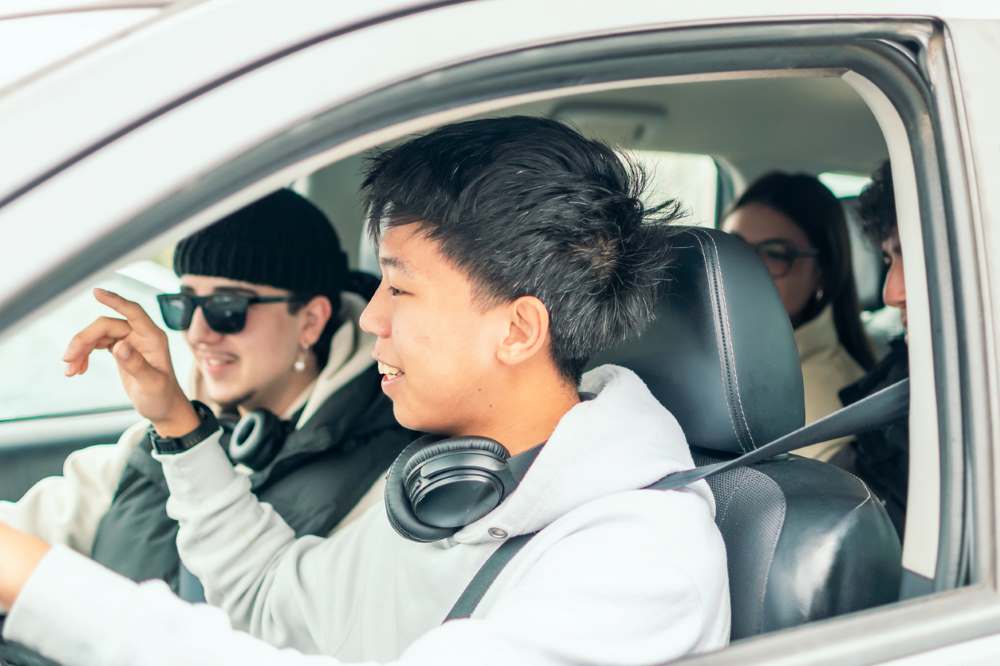
Teen drivers enter a new phase of life filled with independence and responsibility. They're not just learning to drive; they're experiencing road safety for the first time. Each year, thousands of teens start driving, bringing unique challenges that affect their safety and that of others. Understanding these challenges helps develop good driving habits that stick.
Parents and guardians play a key role in guiding young drivers. Talking about defensive driving, setting clear family rules, and addressing common risks can help teens drive safely. Covering topics like distractions, emergency prep, and car maintenance builds a strong foundation for responsible driving.
Teaching Defensive Driving
Being ready for the unexpected behavior of other drivers is a key skill for teens. Defensive driving means staying aware of surroundings and spotting possible dangers early. Keeping a safe distance from the car ahead gives them time to react to sudden stops—a vital habit for new drivers. Understanding road situations, like sudden lane changes or pedestrians crossing, helps them respond calmly instead of panicking.
A car accident attorney often sees cases where young drivers struggle with emergency situations, such as skidding or brake failure. Teaching them simple techniques—like steering into a skid or pumping the brakes to regain control—can make a huge difference. Practicing these scenarios on wet or slippery roads during supervised sessions helps teens be better prepared for real-world driving challenges.
Setting Clear Rules at Home
Clear family rules help teens develop safe driving habits. Setting curfews can reduce late-night driving risks, especially on weekends when more accidents tend to happen. Limiting the number of passengers helps minimize distractions and improve focus, with studies showing that crash risks increase with each additional passenger. A strict no-texting policy can drive home the dangers of distracted driving, emphasizing how even a brief glance at a phone can lead to serious accidents.
Talking about speed limits encourages understanding of both the law and safe driving. Tracking apps can provide helpful details for parents while promoting responsible driving habits. Open conversations about these rules and their importance can lead to long-term safe driving behavior.
Teaching Basic Car Maintenance
Knowing how to care for their vehicle helps teens take ownership of their safety and that of others. Checking tire pressure regularly improves handling and fuel efficiency. A simple pressure gauge lets them make quick adjustments when needed. Recognizing dashboard warning lights and acting quickly can prevent bigger problems later.
Teens should also learn basic tasks like checking fluid levels and changing windshield wipers. Knowing how to handle common roadside issues like flat tires or dead batteries can reduce stress during emergencies. Carrying a spare tire and jumper cables, and knowing how to use them, can make a big difference. Practicing these tasks helps build confidence and readiness.
Handling Peer Pressure and Distractions
Teens often feel pressured to go along with friends, especially when driving. Having multiple passengers can increase distractions and risky behaviors, like speeding or playing loud music. Discussing how too many passengers affect focus can help teens make safer choices. Setting limits, such as allowing only one or two passengers, promotes better decision-making.
Giving teens ways to handle peer pressure, like saying no to dangerous activities, strengthens their confidence. Open conversations about staying firm in their decisions and avoiding distractions—like silencing phones while driving—can significantly improve their focus on the road.
Preparing for Emergencies
Being ready for unexpected situations starts with preparation. An emergency kit with essentials like a flashlight, first aid supplies, and snacks is a must. A basic toolkit can help with minor car problems. Teens should know how to find a safe spot to pull over during a breakdown and what steps to take while waiting for help.
Practicing how to document accidents teaches teens what information to collect, like contact and insurance details, vehicle make and model, and the exact location of the incident. Taking photos of the scene, including any damage, can be vital for accurate reports. Staying calm in stressful moments can affect the outcome positively. Regular discussions about emergency procedures, like when to call roadside assistance or emergency services, help them stay ready for the unexpected.
Becoming a safe teen driver means building good habits that stick. Staying alert to other drivers, keeping a safe distance, and reacting calmly to hazards are key defensive driving skills. Family rules, like limiting passengers and banning phone use, help teens stay focused. Learning basic car maintenance, like checking tires and understanding warning lights, gives them more control over their safety. Handling peer pressure and knowing how to respond during emergencies builds confidence and reduces panic in tough situations. With guidance from parents and regular practice, teens can develop the skills to drive safely and responsibly for life.



























